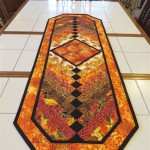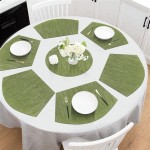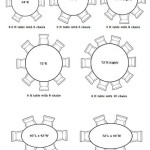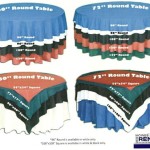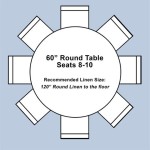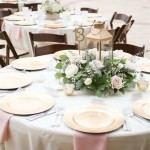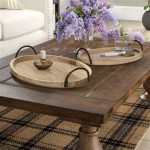How to Make an Outdoor Table From Scaffold Boards
Creating outdoor furniture from reclaimed scaffold boards offers a cost-effective and environmentally conscious approach to furnishing patios, gardens, and other external spaces. Scaffold boards, known for their durability and rustic aesthetic, provide a solid foundation for constructing a range of outdoor tables. This article details the process of building a sturdy and visually appealing outdoor table using scaffold boards, outlining the necessary materials, tools, and techniques.
The appeal of using scaffold boards lies not only in their affordability but also in their inherent character. The weathered surfaces and occasional imperfections contribute to the unique charm of each table. Furthermore, upcycling materials reduces waste and provides a sustainable alternative to purchasing new furniture.
Before embarking on the project, careful planning and preparation are essential. This includes selecting the appropriate scaffold boards, gathering the necessary tools, and designing the table to meet specific space requirements and aesthetic preferences. Attention to detail during the construction process will ensure a durable and visually appealing finished product.
Key Point 1: Preparation and Materials
The initial phase involves acquiring the necessary materials and preparing the workspace. The choice of scaffold boards is paramount, as their condition and dimensions directly impact the final outcome. Consider the desired size and shape of the table when selecting the boards. The location of the table also dictates the treatment required for weather protection.
Essential materials include:
- Scaffold Boards: Typically, three to five boards are required for the tabletop, depending on the desired width.
- Table Legs: These can be purchased pre-made (metal or wood) or constructed from additional scaffold board pieces.
- Wood Screws: Choose screws that are suitable for outdoor use, such as stainless steel or coated screws, to prevent rust. Their length should be appropriate for the thickness of the boards and legs.
- Wood Glue: A high-quality exterior-grade wood glue is essential for creating strong and water-resistant joints.
- Sandpaper: A range of grits (e.g., 80, 120, 220) is needed for smoothing the wood surface.
- Wood Stain/Sealant: This protects the wood from the elements and enhances its appearance. Opt for a stain and sealant with UV protection for optimal longevity.
- Optional: Metal Brackets: These can provide additional support and stability, particularly for larger tables.
Essential tools include:
- Circular Saw or Hand Saw: For cutting the scaffold boards to the desired length. Precise cuts are crucial for a professional finish.
- Electric Drill: For pre-drilling pilot holes and driving in screws.
- Sander: An electric sander significantly speeds up the sanding process, but hand sanding is also an option.
- Measuring Tape: For accurate measurements and marking.
- Pencil: For marking cut lines and screw locations.
- Clamps: To hold the boards together while the glue dries.
- Safety Glasses: To protect the eyes from dust and debris.
- Dust Mask: To prevent inhalation of sawdust.
Prior to construction, inspect the scaffold boards thoroughly. Remove any loose debris or splinters. If the boards are particularly dirty, a scrub with soap and water may be necessary. Allow the boards to dry completely before proceeding.
Consider the work environment. A well-ventilated area is beneficial, especially when sanding or applying sealants. Protect the work surface with a drop cloth or plastic sheeting.
Determine the dimensions of the table. This includes the length, width, and height. The standard height for an outdoor dining table is typically between 28 and 30 inches, but this can be adjusted to suit individual preferences. Sketching a simple plan or using a digital design tool can aid in visualizing the finished product and ensuring accurate measurements.
Key Point 2: Constructing the Tabletop
The tabletop is the most visible part of the outdoor table, therefore meticulous attention to detail is paramount. Begin by cutting the scaffold boards to the desired length. Ensure that all cuts are square and consistent. Using a circular saw with a guide can help achieve accurate and clean cuts.
Arrange the boards side by side to form the tabletop. Consider the grain patterns and any imperfections to achieve the desired aesthetic. Rotate the boards until a visually appealing arrangement is achieved.
Apply wood glue to the edges of each board where they will meet. Use a generous amount of glue to ensure a strong bond. Clamp the boards together tightly, ensuring that they are flush and aligned. Use multiple clamps to distribute the pressure evenly. Allow the glue to dry completely, typically for at least 24 hours. Follow the manufacturer's instructions for drying times.
Once the glue has dried, remove the clamps. The boards should now be securely bonded together. Proceed to sand the tabletop, starting with a coarse grit sandpaper (e.g., 80 grit) to remove any imperfections or unevenness. Gradually progress to finer grits (e.g., 120 grit, 220 grit) to achieve a smooth and even surface. Pay particular attention to the edges and corners, rounding them slightly for comfort and safety.
After sanding, remove all dust and debris from the tabletop. A vacuum cleaner or a tack cloth can be used for this purpose. Inspect the surface for any remaining imperfections and address them as needed.
Enhancing the strength of the tabletop can be achieved by adding supports to the underside. These supports can be made from additional pieces of scaffold board or metal brackets. Attach the supports perpendicular to the tabletop boards, using wood glue and screws. Ensure that the supports are evenly spaced to distribute the weight and prevent warping.
Key Point 3: Attaching the Legs and Finishing
The selection and attachment of the table legs are crucial for stability and overall design. Pre-made legs in wood or metal can simplify the process. Alternatively, legs can be fashioned from additional scaffold board, cut and assembled to the desired shape, such as a simple A-frame or box design. The method of attachment depends on the type of legs used.
For purchased legs, follow the manufacturer's instructions for installation. Typically, this involves attaching mounting plates to the underside of the tabletop and then securing the legs to the plates with screws. Ensure that the legs are positioned evenly and securely.
If constructing legs from scaffold boards, create a sturdy framework. Join the pieces using wood glue and screws. Consider adding cross braces for additional stability. Attach the legs to the underside of the tabletop using wood glue and screws. For larger tables, metal brackets can reinforce the joints between the legs and the tabletop.
Before applying the final finish, ensure that all screw holes are filled with wood filler. Allow the filler to dry completely and then sand it smooth. Remove all dust and debris from the table.
The final step involves applying a protective finish to the tabletop and legs. This protects the wood from the elements and enhances its appearance. Choose a stain and sealant that is specifically designed for outdoor use. Apply the finish according to the manufacturer's instructions. Typically, this involves applying multiple coats, allowing each coat to dry completely before applying the next. Lightly sand the surface between coats to achieve a smooth finish.
Pay attention to the edges and corners, ensuring that they are adequately protected. Applying multiple coats of sealant to these areas can prevent water damage and extend the life of the table.
Once the final coat of sealant has dried completely, inspect the table for any imperfections. Touch up any areas as needed. Allow the finish to cure fully before placing the table outdoors.
Regular maintenance is essential to prolong the life of the outdoor table. Clean the table with soap and water as needed. Reapply the sealant every year or two to maintain its protective properties. Cover the table during periods of inclement weather to prevent damage.
By following these detailed steps, individuals can create a functional and aesthetically pleasing outdoor table from reclaimed scaffold boards, adding a touch of rustic charm to their outdoor living spaces.
Remember to always prioritize safety when working with power tools and wood. Wear appropriate safety gear and follow the manufacturer's instructions for all tools and materials.

How To Make A Table Out Of Scaffold Boards Upcycling Safe
.jpg.aspx?strip=all)
How To Make A Table Out Of Scaffold Boards Upcycling Safe
.jpg.aspx?strip=all)
How To Make A Table Out Of Scaffold Boards Upcycling Safe

Thrifty Diy How To Upcycle Scaffolding Boards Into A Garden Table My Life By Cassie Fairy Inspiration For Living Lovely On Budget

How To Make An Industrial Rustic Scaffold Board Dining Table And Bench

Diy How To Make Your Own Outdoor Seat From Scaffolding Planks My Thrifty Life By Cassie Fairy Inspiration For Living A Lovely On Budget

Diy Scaffold Board Garden Bench Project How To Make Your Own Outdoor Seat From Scaffolding Planks

Thrifty Diy How To Upcycle Scaffolding Boards Into A Garden Table My Life By Cassie Fairy Inspiration For Living Lovely On Budget

Makeover A Dining Table Made From Scaffold Boards Roses And Rolltops

How To Build A Scaffold Board Table Prevent Cupping
Related Posts


